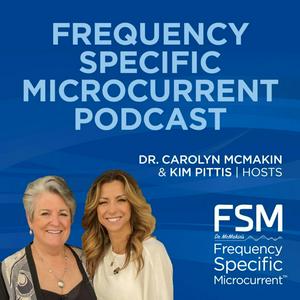180 - Advanced Techniques, Hope and Ethics with Frequency Specific Microcurrent
https://frequencyspecific.com https://fsmsports365.com Carolyn McMakin, MA, DC Kim Pittis, LCSP, (PHYS), MT 00:00 Understanding Movement Patterns and Safety 00:18 Introduction to Frequency Specific Microcurrent (FSM) 01:05 Personal Reflections and Professional Gratitude 04:22 Challenges and Learning in Medical Practice 06:29 The Importance of Continuous Learning 09:30 Case Studies and Practical Applications 13:20 Exploring Historical Medical Texts 23:24 Advanced Techniques in Patient Treatment 31:24 Embracing Curiosity in Movement 32:27 Applying Open-Mindedness to Chronic Illness 34:08 The Challenge of Patient Motivation 37:11 The Role of Hope in Recovery 39:46 Ethics and Confidentiality in Treating Athletes 51:34 Realistic Expectations in Treatment 56:48 Upcoming Events and Announcements **The Nervous System and Movement Patterns** A critical point to understand is that a movement pattern will not sustain or be effectively taught if the nervous system perceives it as unsafe. This highlights the importance of creating a safe foundation for the nervous system to facilitate new movement patterns. FSM plays a crucial role by helping create this safe environment, allowing for long-term pain reduction and the integration of effective movement patterns. **Troubleshooting Chronic Pain and Patient Management** Practitioners often encounter patients who have tried multiple treatments and modalities with little to no success. Understanding why certain muscles or movements are not firing, instead of simplifying diagnoses to issues like "weak glutes," is essential. Engaging with patients through comprehensive assessments, and considering underlying mechanical reasons for persistent issues, are steps FSM practitioners often emphasize. **Neurosensory Integration and Chronic Conditions** For those handling patients with chronic pain, connecting various sensory inputs to the brain's sensory motor cortex can improve patient outcomes. Addressing issues such as nerve adhesion, inflammation, and the mind's perception of pain is vital. FSM's ability to manipulate real-time nervous system responses allows practitioners to re-establish sensory pathways and regain movement functions. **Gratitude, Professional Development, and Patient-Centered Care** A key takeaway for practitioners is to maintain an attitude of gratitude for their profession and the constant learning it provides. Professionals in FSM often discuss the importance of loving what you do and continuously striving to improve your abilities. Additionally, placing the patient first by considering their goals, the realism of achieving these, and understanding when FSM is not the right solution reflect the ethical cores of patient-centered care. **The Importance of Connection and Community** For practitioners, engaging with enthusiastic individuals who share a passion for the same methodologies can enrich their learning experience and provide support. Whether it's helping professional athletes optimally perform or working with patients suffering from chronic illnesses, a community that shares insights and offers collaborative problem-solving is invaluable. Medical students and practitioners should consider how the principles discussed in the FSM podcast can be integrated into their practice to enhance patient outcomes. By understanding the vital role of the nervous system in movement patterns, addressing chronic pain by connecting neural pathways, and maintaining a patient-centered approach, practitioners can navigate complex cases with greater success. The FSM community offers a supportive environment where sharing knowledge and techniques benefits both practitioners and patients alike.



